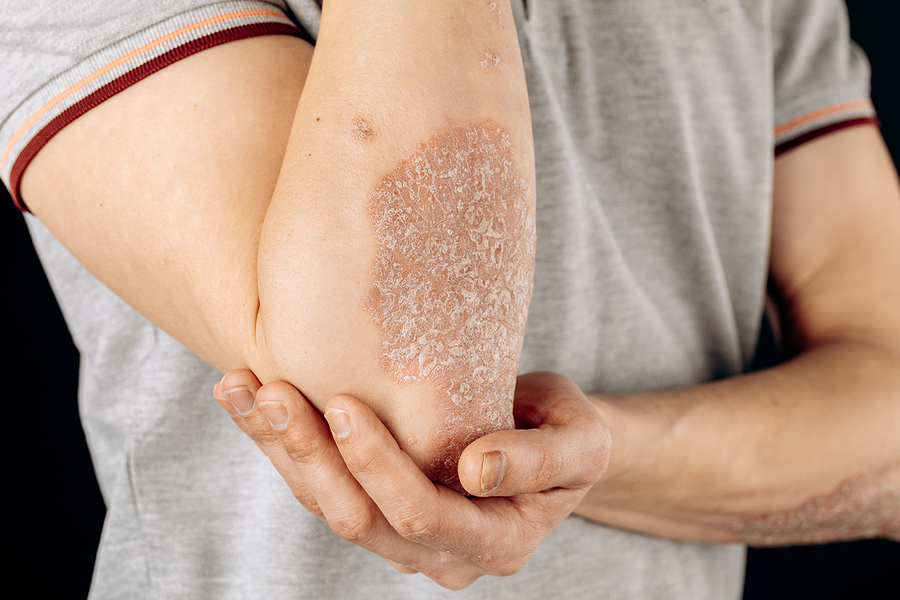Psoriatic arthritis (PsA) is a chronic autoimmune condition affecting millions worldwide. As PsA progresses, it becomes very debilitating, causing pain, swelling, and joint stiffness that can make even simple day-to-day tasks a real struggle. Treating PsA early is crucial to reducing the impact of this condition on your quality of life and preventing long-term complications.
So, what are the early signs of Psoriatic arthritis, and what can you do about them? In this article, we’ll show you how to recognize the signs of PsA and take steps to get treatment, reducing the risk of long-term joint damage or other complications.
What is psoriatic arthritis?
Psoriatic arthritis is a type of chronic, inflammatory arthritis. It’s closely associated with psoriasis, a chronic skin condition that causes red, scaly patches on the skin’s surface. While PsA can develop in people who already have psoriasis, it can also occur before or at the same time as psoriasis.
Psoriatic arthritis affects both men and women and can appear at any age, although it most commonly occurs between the ages of 30 and 50. The exact cause of PsA remains unclear, but it is believed to result from a combination of genetic, immune, and environmental factors.
Early signs of psoriatic arthritis
While the early signs of psoriatic arthritis may vary from person to person, here are some common signs of PsA that most patients experience:
Joint pain and stiffness – Persistent joint pain, often accompanied by stiffness, is the most common symptom of psoriatic arthritis. The pain is typically experienced in the joints of the fingers, toes, knees, ankles, and lower back. It may be worse in the morning or after periods of inactivity, and it can affect multiple joints on both sides of the body.
Swollen joints – Swelling around the affected joints, caused by inflammation, is also seen in most patients. Swollen joints are usually warm or tender, and may appear puffy or feel tender to the touch.
Skin changes – The presence of red, scaly patches of skin, often with silver-colored scales, may indicate a potential connection between joint inflammation and psoriasis. These skin changes can occur anywhere on the body, including the scalp, elbows, or knees.
Nail abnormalities – Finger or toenails may become pitted, ridged, discolored, or separated from the nail bed. Nail psoriasis, characterized by tiny dents or yellowish-brown spots on the nails, is commonly seen in people with PsA.
Eye inflammation – Psoriatic arthritis can also affect the eyes, leading to inflammation, redness, and pain. You may experience conjunctivitis (pink eye) or uveitis, an inflammation of the inner eye structures. Eye symptoms should be checked by an eye care professional promptly.
Fatigue and general malaise – Many psoriatic arthritis sufferers experience persistent fatigue and a general sense of malaise, or feeling unwell.
Recognizing these early signs of psoriatic arthritis is crucial for early diagnosis and intervention. So, what should you do if you think you may have psoriatic arthritis?
What to do if you think you have psoriatic arthritis
If you’re experiencing any of these symptoms or suspect you may have PsA, it is important to seek medical advice for a thorough evaluation and appropriate management. Early diagnosis of PsA can help control inflammation, prevent joint damage, and improve long-term outcomes.
The rheumatologists at Advanced Rheumatology of Houston can help to create a personalized treatment plan based on your individual symptoms, to help improve your quality of life and keep your psoriatic arthritis in the backseat. Contact us here or call (281) 766-7886 to make an appointment with our rheumatology experts.



